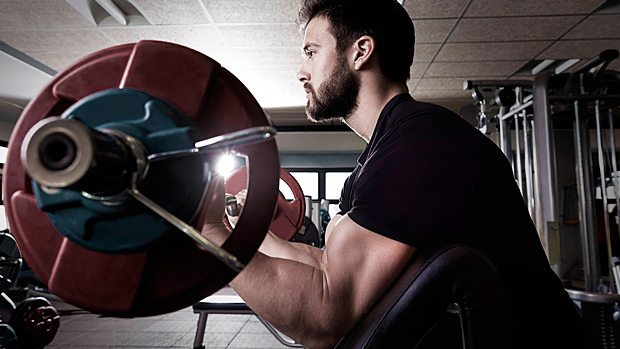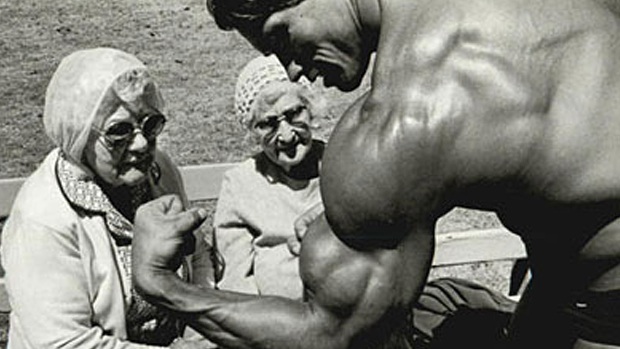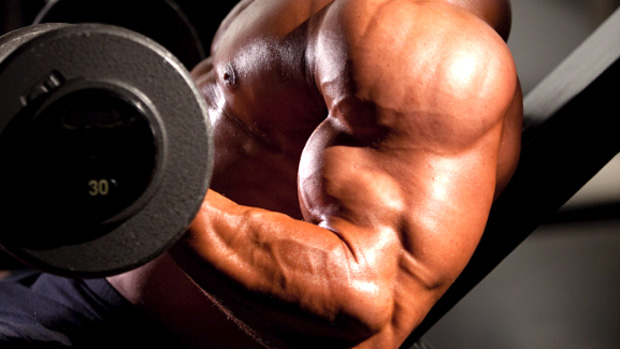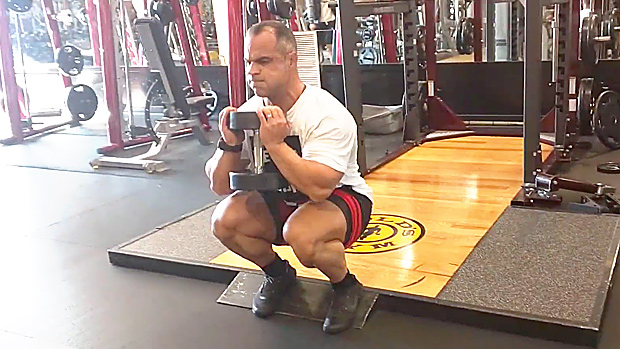Ronnie Coleman once said that the way to build muscle fast is to get a pump with heavy weights. That might sound simplistic, but it tells you a lot about weight selection in training.
Bottom line? You need to use weights that are heavy enough for you, but that will still cause the muscle tension required to create a pump. There are two ways lifters mess this up:
This won't give you a solid pump. There's a point where if you add more weight you can still do the work, but you won't actually feel the target muscles doing the work. The tension gets shifted and spread out to other muscles.
Lifting maximal or near maximal weights that don't create a pump and during which you don't feel the target muscle being loaded can be used as a way to increase strength and muscle hardness. But it can't be your main approach to training when your primary goal is building muscle.
This won't lead to maximal growth if used as the main training method. Using a very light weight can allow you to do the reps with constant tension: going slow and flexing the muscle hard. You can also do high reps, drop sets, and supersets and get a huge pump. But the weight isn't heavy enough to create maximal tension.
Using light weights to get a skin-splitting pump can assist in stimulating muscle growth by increasing nutrient uptake by the muscles and by the activation of mTor. But it can't be your main way of training when trying to build maximum muscle.
Try to find someone who built an impressive amount of muscle by only doing light pump work. They exist, but they're often older and have a history of training heavy early on. When you already have a lot of muscle, you don't need as much heavy lifting to continue improving. But don't look at what the big guys are doing now, look at what they've been doing all their lives to get where they are.
Challenge yourself without losing the feeling of a crisp muscle contraction. This is the key to building size. To challenge yourself, do anywhere between 4 and 8 tough reps per set, with a focus on 6-8. This will be heavy enough to load the muscles properly, but not so heavy that tension shifts away from the target muscle. It'll also give you enough mechanical work to create the fiber fatigue that leads to growth.
When researchers studied lifters going to failure, they found similar gains between those using 30% of their max and 80%. However, that same study found that those training with 80% had roughly twice the STRENGTH gains as those using 30%.
This should tell you one of two things: Either the lighter weights stimulated more sarcoplasmic hypertrophy (increase in cell volume without making the actual fibers bigger) OR the neural factors weren't trained as much. In either case, it's a big drawback.
Sarcoplasmic hypertrophy can be lost more easily than hypertrophy of the actual muscle fibers. So while you can increase it to "top off" your gains, the bulk of your training should be aimed at increasing fiber size, which makes your muscles bigger AND stronger.
Neural efficiency is important too. The more efficient you are at recruiting your muscle fibers, the less fatigue your body requires in order to build a maximum amount of fibers. The sooner you can recruit fast twitch fibers in the set, the farther away you can stay from failure, and the easier you'll recover, allowing for either more volume or frequency.





